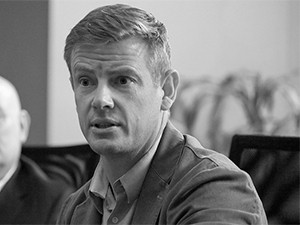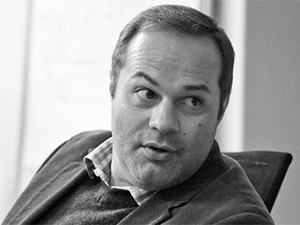
There are endless quotes about how important education is to delivering development and progress on a global scale. Those countries that get education right thrive; those that fail to innovate and ensure that their education systems keep up with the times start slipping behind on global rankings.
The legacy of apartheid, even more than 20 years later, remains ever-present in South Africa. Schools in previously white areas remain significantly better than township schools, and schools in the rural areas are almost universally behind the curve when it comes to the delivery of results.
Technology remains the one thing that can bridge the gap, a gap caused by not just a lack of physical infrastructure - although that is a key issue - but more often by the inability of these schools to attract and keep the level of skilled teachers needed to ensure better results.
While there are projects on the go to ensure that all schools - and not just privileged ones - have access to appropriate technology, the issue of what constitutes appropriate technology raises its head.
Richard Firth, CEO of MIP Holdings, points out that there is a distinct difference between primary and high-school environments when it comes to technology. "In primary school, it's fine for learners to use consumer technologies such as tablets as learning aids, but in the higher grades, these technologies are simply not appropriate. This is the shift from a consumer device to a productivity device and having a more powerful device allows learners to experiment with new technologies such as robotics. This is something that is simply not possible with a tablet."
Matthew Barker, country manager for Fortinet, adds that it's not even a simple breakdown between primary and high-school and university education. At each step on the educational journey, it's essential for the correct technology to be applied in order to get the desired outcome.
"Who the individual is should be key to defining how they use technology," says Barker. "There is no way to get away from using tablets in schools. Tablets are a primary form of interacting with content, but it is a matter of managing that interaction. That interaction may take the form of watching videos or it may involve gamification, which is now big in schools. But as they move forward, the question is how do we transition them into real-world devices, and by this I mean notebook computers. There is a certain amount of convergence between tablets and computers, but, essentially, the notebook is a business tool that people are going to have to interact with for the rest of their lives, while the tablet is still an entertainment device. We are also seeing demand from the more advanced schools for programmable devices such as Raspberry Pis and so it is vital to look at each unique situation."
In primary school, it's fine for learners to use consumer technologies such as tablets as learning aids, but in the higher grades, these technologies are simply not appropriate.
Richard Firth, MIP Holdings
Having the right technology is just one part of the solution. Other parts involve having teachers who are able to take advantage of it and having an understanding of what outcomes are desired from the education process.
Kwena Mabotja, Sub-Sahara Africa manager at SAP University Alliances, adds that filling the skills gap in South Africa should be the primary driver in how the country deploys its resources.
"We need to take a step back and look at the science, technology, education and maths (STEM) skills. If we don't deliver in this area, we will not only be failing today, but we will be failing in the future. These are the foundational skills that are required for a winning country, so the discussion around technology needs to be around what core STEM skills we want to instil at the K-12 level."
Unified policy
Riaan Graham, director for Sub-Saharan Africa at Ruckus Wireless, adds that achieving this comes down to ensuring that the correct policies are in place.
"If you have a unified policy in place that guides everything from the start of the education journey through primary and high school and into universities, then you can deliver the outcomes you are looking for. The concept of policies is something technology companies are familiar with, but we need government to ensure that proper policies are in place. The jobs that are critical to moving the country forward - doctors, engineers, nurses, all the skilled people we need - they have to be educated and if we don't have the support systems in place to empower them, we will continue to lag the rest of the world."

Barker adds that in reality, all the different schools are making their own policies, especially in the private schools and they then procure the devices that are required to enable that policy. "The problem is that government appears to be taking the approach of, 'I'll give you a device and therefore you are enabled', and that is not the way to improve education in SA. "
Firth says government can learn from the approach private schools have taken. "The private schools, through the Independent Schools Association of South Africa (Isasa), drove a standards-based approach to delivering technology to the schools. Having a standards-driven approach allows for much greater collaboration in this area. However, the greater commercialisation of private education in South Africa makes the implementation of standards more difficult as the large, listed education groups are competing with each other to deliver the best results and attract the top students as this has become the benchmark of performance.
"If the private schools were able to collaborate on driving technology standards, government would be able to leverage this work in its own initiatives. An additional complication is the teacher unions, which may feel their members are threatened by the deployment of technology. In the end, it's not only about technology, it's also about the way education is delivered."
No quick fix
At the core of the issue is the commitment of government to change the way education is delivered in South Africa. Graham points out that Finland is an excellent example of a country that, in the '70s, saw that its education system was not serving the current or future needs of the country and as a result, it fundamentally overhauled its education system. The result of this is that the country is rated top in almost every education survey.

"South Africa can't simply copy the Finnish model as the local environment is vastly different. There is no quick fix for this, but there needs to a concerted effort and a choice has to be made whether we are going to fix the problems or resign ourselves to mediocrity. If we want to fix them, then technology will play an immense part in the solution."
Graham points out the vast disparities between schools in SA, with some essentially still mud structures, and video technology is the key to reaching many of these remote locations. "The question remains about what the role of the teacher would be in this new environment where the teaching is being provided by a recorded educator of via a live video link. Does the teacher have a role as a mediator or are they just there in order to maintain discipline while the technology-enabled solution provides the necessary information?"
Firth comments that there is need for a discussion around how much control needs to be applied in an educational environment. "Because these kids are able to circumvent almost any restrictions that you put in place, is there a reason to apply these restrictions?"
High costs
Graham mentions the issue of liability, where students, given unfettered access to a network, may access content that might put the school at risk. Given the nature of the mobility of most of the devices that are being brought into the school environment, including laptops, tablets and smartphones, it is essential for the systems being put in place to be context-aware. Firth argues that it's simply impossible to secure the entire network at a school and still make it financially viable, given the number of users at an average South African school.
While security is a key concern, cloud services could be leveraged to ensure that all schools have access to adequate resources at a reasonable cost, says Ruckus Wireless' Graham. "This could be used to deliver services to a range of schools at a reasonable cost." MIP's Firth disagrees, saying that at a private school with which he is involved, cloud services are used extensively and the costs are significantly higher than one would have expected.

However, Fortinet's Barker says that the functionality of management systems today should allow government to deploy a range of services from a central hub, ensuring that it is not necessary to put IT support skills at every single school.
Graham comments that while there can be endless discussions about what the role of business should be and how government should leverage the abilities of public sector partners, in the end, the key should be the delivering of results.
"It is possible for vendors to play a key role in delivering well-educated employees to South African businesses," comments SAP's Mabotja. "Already we work with people to give them technology-specific skills, primarily around the SAP environment." This attitude is echoed by MIP's Firth, who says MIP brings young people in and provides them with training, but the performance of these students is hampered by a poor understanding of basic concepts.
From the discussion at the roundtable, it becomes clear that just as there is no simple solution to the issues faced by the South African education system, so there is no quick technology fix. It is evident that a common set of policies would go a long way to ensuring that technology usage is optimised, but there is no single technology solution that can solve all the problems faced by schools. For some schools, the need is to optimise and enhance the educational experience, but for others, it's simply to provide access to qualified teachers. Co-operation between the schools, the private sector and government is, however, the one thing that these initiatives cannot do without.
This article was first published in the September 2016 edition of ITWeb Brainstorm magazine. To read more, go to the Brainstorm website.
Share